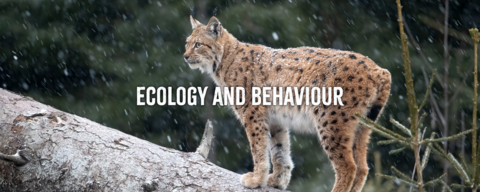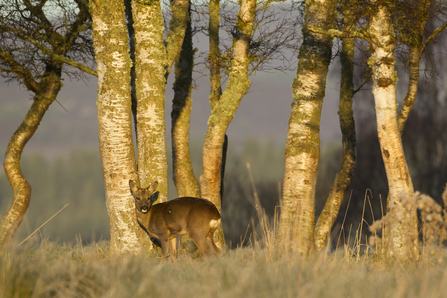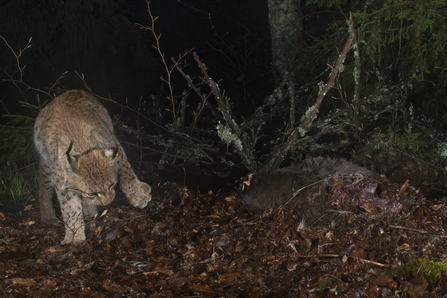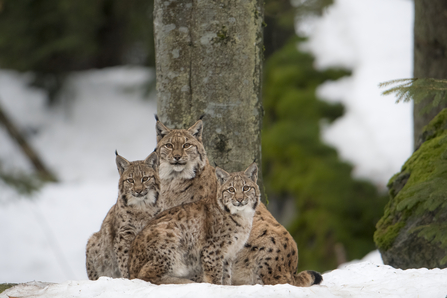
Lynx © Berndt Fischer
Habitat
Eurasian lynx are woodland animals. Across Europe, they can be found in deciduous, coniferous and mixed forests. They like areas with lots of understory plants, which provide places to hide from people and cover for hunting their preferred prey of roe deer.
Diet
Lynx are top carnivores, hunting for food. Throughout most of Europe, their main prey is roe deer. They also hunt other ungulates (hoofed mammals), like chamois, red deer and mouflon. They will also sometimes feed on smaller prey, such as rodents, hares, foxes and birds.
In reintroduced lynx populations in Europe, ungulates such as roe deer make up 72-100% of a lynx’s diet. Each lynx kills a large prey (like a deer) about once a week, which is around 50 deer per year.

Roe deer © Mark Hamblin/2020VISION
You can learn a lot about what an animal eats from looking at its poo. Lynx scat is longish, oval, and 2.5cm thick. It is full of hair and is usually left on paths or near large stones and rocks. Lynx sometimes cover their scat with leaves.
Hunting
Lynx are most active at night, or at dusk and dawn. This is when they hunt, typically ambushing their prey from the ground. The lynx will hide behind plants or other cover until their prey is just a few metres away, then pounce and deliver a fatal bite to the neck.
Lynx won’t eat a whole deer at once. After feeding, they bury their prey beneath a layer of leaves to hide it from scavengers, such as foxes. They’ll return to feed on it over several days.

Lynx covering its prey © Berndt Fischer
Life stages
For most of the year, adult lynx are solitary animals. They live on their own within a specific home range, which can start from 80km2, depending on environmental factors. Like other cats, they stake out their territory and communicate with neighbours by scent marking.
But during the mating season, between February and mid-April, males and females come together to mate. Females are pregnant for two months, usually giving birth to a litter of kittens in late May or June. A litter tends to be one to four kittens, but on average they give birth to two.
The male plays no part in the parental care, but kittens stay with their mother until they’re around 10 months old, when they’re classed as juveniles. They’ll then leave to search for their own territory. Typically, only half of the kittens from a litter will survive their first year. Those that do survive generally breed for the first time from two years old and can live to be around 12-13 years old.

Lynx and kittens © Berndt Fischer
Role of lynx in ecosystems
Top carnivores, like lynx, play an important role within their habitat. Their actions have impacts on many other species. Some impacts are direct, such as reducing the populations of the animals they hunt. Others are indirect, such as providing food for scavengers like beetles and birds, which feed on the remains of a lynx’s prey.
There can be more complex, cascading effects too. Deer are important in the environment as they feed on plants and trees. However, when there are too many deer, plants and trees can struggle to grow. As deer are the main prey of lynx, these top carnivores can help control deer populations, allowing forests to regrow.
